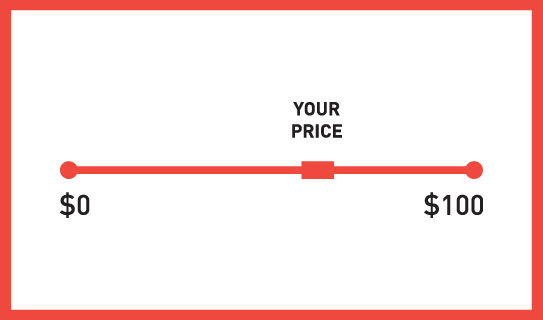Startup Advice
“You Told Me My Company Name Sucks”
…was the subject line of an E-Mail I received a few days ago. Needless to say, I was intrigued to read on:
“I called my company “(Name Withheld)”, but you told me it was horrible. For that reason I wanted to reach out and say THANK YOU!”
He listened and he turned the page and now he is grateful for my frank advice just as much as for him listening and acting upon it. This is how I want to start off the New Brand Post for 2015 as it sums up what is key to branding a new venture, and what I want you to keep upfront and center this year.
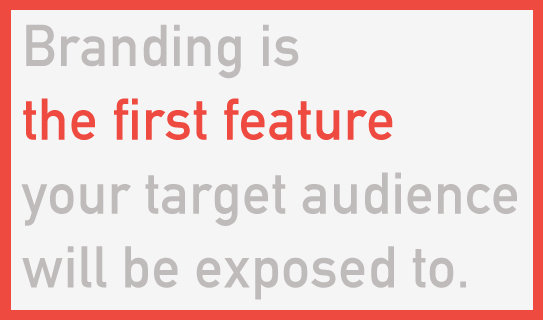
When you start a new venture, or initiate a new product offering, you tend to know best. You know your product best, you know your audience best, you know your marketplace best. You know your road map best. So, naturally, you are closing off quickly. Why? Because you know best.
Truth is, you just can’t be great at everything. I am not. No one is.
The moment you let go of that notion is the moment you open up to greatness. As a person, as a founder and as a brand.
Successful brands are built in collaboration with – and powered by insights from – specialists within their domain. The ones that are great at a certain thing, just like you are at your thing. It takes money and/or time, but for the ones who ‘get it,‘ like the one who wrote me above E-Mail, it will make for a better, if not great, brand.
This year be open, listen, absorb and analyze every step along the way as it relates to tasks like naming, brand identity, online presence, brand positioning, the same way you analyze, and more often than not over-analyze, each feature of your product or service offering. Branding is the first feature your target audience will be exposed to. It better click the right way, right away.
Define Your Audience Through Brains And Guts Versus Big Data
I had a fun time chatting at the Techweek panel two weeks ago about branding and marketing for startups (Amazing location, can’t beat that view). As panels go, it’s always a bit awkward and one can never predict the outcome. In my case, I was surprised that I could not stop talking about Topgolf. And I am not even a golfer. Here’s why:

Topgolf Promo Shot Via TopGolfUSA’s Twitter Channel
Topgolf is a chain of golf entertainment centers that cater to the very audience (Millennials, 18-34) that every other golf-related business is afraid of, because data, major news outlets (WSJ, Businessweek, Forbes) and Dick’s Sporting Goods’ golf layoff story has taught us that they just don’t care about golfing anymore. Topgolf created a cool environment that is about having a drink, a great time socially, and lastly about golfing. They flipped the things that made golf unattractive for Millennials and made them into a social media love fest, a place that demands you taking pictures and videos. You actually want to show off that you are golfing with friends. Pretty remarkable.
In the beginning though it seems like Topgolf (as most startups would have done) was driven by data, so they went after families and pros, based on a recent article in Inc. Data and ‘insights’ often turn into a safe zone for leaders to base their decisions on (like hiring IBM to feel job security in the old days – A.K.A. Fear, Uncertainty and Doubt), and it often leads to mediocre brand strategy and marketing results. I don’t believe it takes half as much data as it takes brains and guts to define your perfect target audience to market to.
If everyone says ‘don’t go there,’ perhaps they just did not take the right path.
Suggested Tweet: “I don’t believe it takes half as much data as it takes brains and guts to define your perfect target audience.” via @FINIENinsights
Branding Is What Happens To You While You’re Busy Making Other Plans
The expression life is what happens to you while you’re busy making other plans was penned in the 50’s. Most of us know the phrase thanks to John Lennon, who adopted it in the magnificent song ‘Beautiful Boy (Darling Boy)’ from 1980, hence making it his. He was the real Mad Men, wasn’t he? Copy, paste, claim, fame. OK, we all know that there was a lot more magic to his genius. Back to another genius who is crafting things: You.
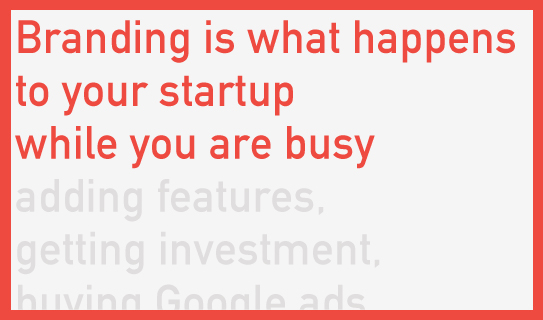
You, as a founder, are so busy doing and planning that you have lost touch with the genius, the beauty, the joy inside that very thing that you are so busy creating. Stop and smell the roses. I mean, really smell them, for once, or once again. You might realize you don’t even know what the beauty of it all is anymore, so you will have to step back to re-define what it means to you; now, today, not when you first had the idea and started the avalanche with a snowball.
Smelling the roses will re-birth your venture’s branding process. Define what kind of roses they are, the beauty of them with all their perfect imperfections (another great songwriter’s lyrics, but not John Legend’s words either), how they smell and how you had imagined them to smell. Without you being overly aware of it (or noticing it for the first time), how could you remind your teammates (who are busy building the brand while you are reading this) of the brand essence, the scent your potential customers are longing to smell?
Once you stopped and resurfaced and redefined, or simply reenergized that very reason behind the madness that is your venture, you will tell them. They are ready to hear it, they love hearing soulful words directly from the source. Tools create followers, you create believers.
P.S.: I will partake in a panel discussion at Techweek LA on November 20th. Come by or stream it live if you want to continue this conversation, or opt out and ‘be busy making other plans.’
Launch, Limited.
Swedish car maker Volvo sold all 1,927 First Edition XC90 models within 47 hours – online-only. Now you can get on the waiting list. Their mini site states:
Only 1,927 all-new XC90 First Edition cars will exist in the world, and each one will be individually numbered. More than a number, it’s your story. A moment in time marked on each First Edition. Made for you.
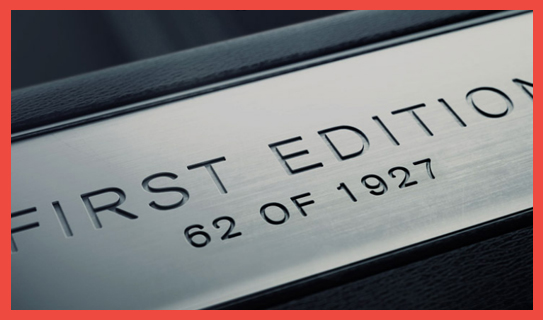
Taken from the Volvo XC90 Limited First Edition website
Limited sells.
Mankind has a fascination with exclusivity, it forms an immediate bond, one that is hard to establish through traditional marketing campaigns. As a startup you should think about ways in which you can promote your initial offering in an exclusive manner to make for that unlimited brand experience.
A powerful story and drool-worthy design will have to be at the foreground of your offering, word of mouth will stand tall behind it.
A limited splash, with expansive waves? It might just be the right strategy for your new venture.
The Secret Behind Big Brands And How Entrepreneurs Can Learn From It
This was one of many topics I was asked about by a croatian startup site prior to the speech I gave two nights ago at the University of Zagreb for the Founder Institute. The interview was published in croatian, which you can peruse here if you speak the language (and want to analyze and help me understand why the Backstreet Boys invaded my Brand Atmosphere), but for the rest of you, here it is:
Startups, especially the ones you will be talking to in Zagreb, are mainly in their early stages. Do they even need branding in that stage? If they do – what kind of branding do they need?
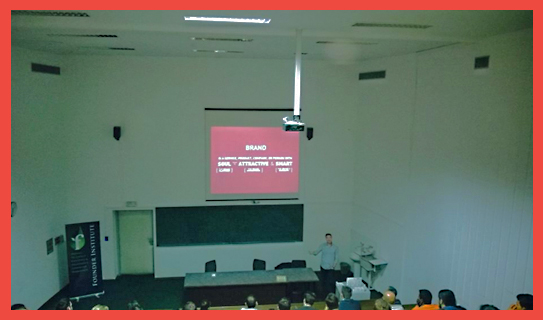
Fabian Geyrhalter speaking at the University of Zagreb for the Founder Institute, October 22, 2014
How can you brand yourself online when you are still a small startup, with a very small team and a limited budget?
When is the right time to hire someone (or a company) to help with branding?
Can you put together some sort of “emergency branding kit” for startups? What would that “kit” be made of?
It gets really difficult for a startup to choose their company name. It has to be unique, it has to be international, it needs to mean something. How do you achieve all of that and more with just one word?
How can a startup’s target audience help with forming a brand? What kind of feedback can that audience provide and how can a startup brand create an emotional connection with their potential customers?
What is the secret behind those huge, well known and beloved brands and what can small startups learn from them?
The 3 W’s That Will Make Or Break Your Website Launch
What’s important when you launch your brand, besides your crystal clear vision and superb offering? Great brand strategy and positioning, a name that resonates with your target, a brand identity design that can grow with your new venture, and of course it all comes together in one crucial place: Your key online presence, your website.
Much can be read about user experience, information architecture, programming languages and SEO. None of which I will repeat, and much of it I see as knowledge that you will eventually receive from your web design and programming teams. And then comes the time where they will ask you for copy and assets, and that’s where it all breaks apart.
Today, I sum up the 3 most important questions you, as an entrepreneur, need to have clarity on in order to create your brand’s site, the www’s of www design:
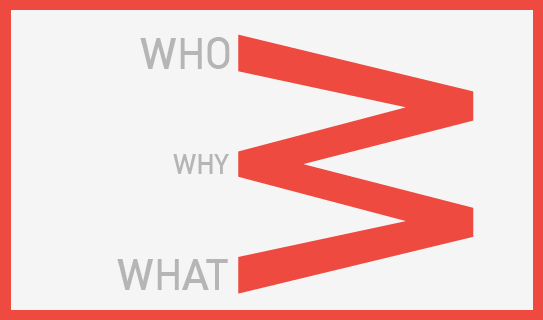
1. WHO
Who are you talking to, who will you engage with? Ensure you have them up front and center, and not your typical pitch talking points, product specs or service capabilities list. Think about them. Then write for them, talk to them.
2. WHY
Why should they care? Care to click further, care to leave their E-Mail with you, care to spread the word, care to contact you? What do you want them to care about? Focus on those questions and provide answers that make them care – the way you want them to care. Many online marketers make CTA’s (Call to Actions) larger. You instead, make the copy and visuals resonate. If they care, they will click. Guaranteed.
3. WHAT
What are you selling? No really, what is it that you are selling? We are selling branding for new ventures, but really we are selling brand launch enablement and peace of mind. What are you really selling?
Once you are clear on your 3 w’s, everything else will derive from it. If your consultants focus on CMS, responsive design, site architecture and everything else but these questions, make sure to put the breaks on the project. These 3 w’s will bring your brand launch online the right way. The rest is the engine of your car, which should be reliable and powerful, but if no one likes the design, the color, the badge and the comfort, no one will ever open the hood to take a closer look.
CATEGORIES: Startup Advice Your Brand Launch: Digital
Launch It Like You Mean It.
Are you working on a brand that will launch because the offering is faster? Bigger? Better? Nicer? Perhaps Healthier?
Likely, hopefully, your brand voice and messaging will reflect that claim just as much as your R&D, but if you have the guts (which most entrepreneurs don’t have when launching a new, especially their first, brand) don’t just say it, but prove it by setting it into action!
Now, badass as you are (what a word!), you will build your entire launch strategy around proving your promise. You are ready to be outrageous. If done well, you will stand out, rise to the top, and be remembered, even before your product launches. Yes, you will move tons of product while doing so.
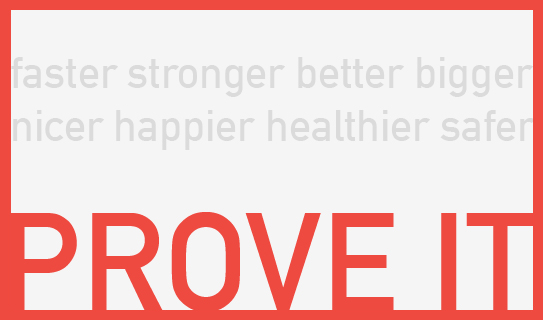
Not a brand launch by any means, nor a unique claim, but T-Mobile is pushing those buttons with a current campaign entitled ‘Test Drive’. Sounds normal. Then you realize T-Mobile is willing to send you an iPhone so you can try their service for free for a week. We are talking “unlimited calls, texts, posts, likes, streams, and downloads,” then 7 days later you just drop it off at the nearest T-Mobile store. Boom! Done! Tested!
Now that’s convincing.
Best of all, the bigger the promise, the less people will actually take advantage of it. Instead, they will just believe you. Your claim turns into a tested reality just by you offering to live up to it in public. If you are ready to do something big that proves your big claims, the message your target audience will receive is simple: Full trust in the promise.
For a new brand to gain that trust pre- and mid-launch can mean nearly instantaneous success. Early brand success, built on founder’s guts.
PS: Make sure you can walk the walk – from a product/service claim as much as from an affiliated promotional offering POV: When Austrian dessous brand Palmers promised a free inner-Europe flight for every purchase made above €100 this September, they had an outrageous claim, which had nothing to do with their product, and on top it was completely miscalculated. Instead of delighting their customers with a jetsetter lifestyle, they sent their brand fans on 8 hour journeys from Vienna to Amsterdam, a typical 2 hour non-stop flight. Demand was high, and flight availability was (as it always will be) limited. They could have known, …and so can you. Now go make your big brand claim, live up to it and launch with a bang.
How To Go Against The Grain And Create A Brand That Is Built On Your Undiluted Beliefs
Most entrepreneurs start off being empowered by one of two very good reasons; sometimes both: A passion for what they (are about to) do, and the urge for the profits they foresee being generated by the new venture. That being said, we mostly see brands talk about the passion that drives the founders and employees. It’s hard not to catch any brand doing it; from most massive food brands such as Chipotle to the few true passion brands like TOMS.
At times you come across a very honest, true-to-yourself, reason that goes beyond your passion or drive for financial success. It is so simple, it’s scary. And when done right, it is so radical that most steer away from it out of fear to upset and turn away potential customers. Herein lies the genius of a founder personality. Not brand personality, but a founder’s personality being infused so heavily into the venture that the brand becomes the person and (s)he calls shots in the public that most CMO’s would get fired for.
An amazing example I came across recently, while spending quality time with my folks in Austria, is that of shoe-maker GEA. The company produces in-house (on-site), hand-made, long lasting and easy-to-repair traditional Austrian footwear. GEA’s social and environmental record is beyond outstanding. So far so great, but now add the underlying layer of true founder personality: The shoe company publishes a political newspaper called Brennstoff (translated: ‘fuel’), in which the owner, Heini Staudinger (a great wiki read for those of you who can read german) boldly voices his opinion and pushes the envelope on a very clear and steady social course; one that many don’t appreciate, one that upsets corporations, investors, banks and the government, and one that the ones who do appreciate, truly love.
And that’s what makes a true founder personality: unafraid to exclude the many, extremely powerful to the few.
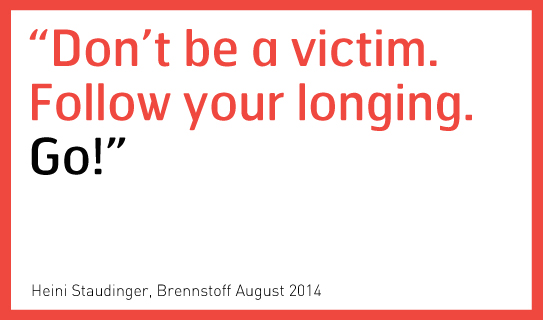
The for-profit company, which is named after the goddess of earth, condemns consumerism and capitalism (even releasing their own currency called ‘Waldviertler,’ which is accepted by 200 regional businesses) and yet attracts so much investment money (through crowdfunding) that they are looking past their 41 stores to unconventional ways of expanding their operations, such as founding an academy. Heini Staudinger’s GEA is living proof that going against the grain and staying true to your personal beliefs, even if they are based on extreme political opinions (or religious beliefs), can be a powerful branding tool that deserves consideration when crafting your new brand’s personality. It may turn out to be your own, undiluted and uncensored, personality that will turn into your brand personality. How about that for ‘radical’ brand thinking? Don’t think at all, just ‘follow your longing and go!’
A Much-Needed Layer Of Protection For Your New Venture
A startup is vulnerable; very vulnerable.
They will notice.
They will steal and copy.
They will undercut your price.
They will be bigger and more powerful than you.
Welcome to entrepreneurship!
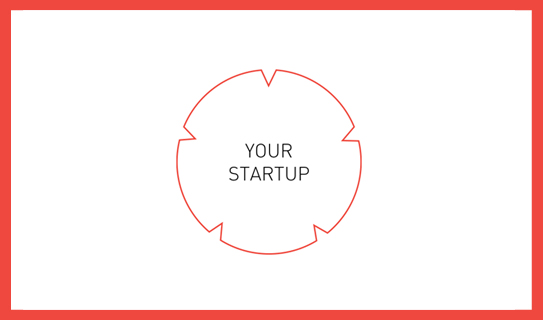
Your startup has many weak areas that require protection
Despite the idea of branding being about positioning, image and voice, for new ventures branding provides something of much greater value: A thick layer of protection.
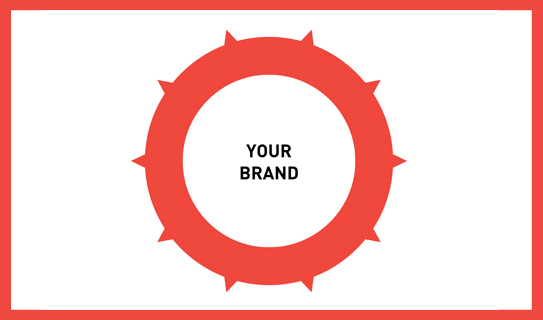
Launching your new venture as a brand provides a thick layer of protection
With a startup product or service you may be so intrigued by its novelty or functionality that you decide to make a purchase.
With a brand you fall in love, and love is a strong word. Love does not fade easily. Once you created love, you will compete on a much higher level, one that is not about price. Your initial customers – the ones you have to fight so hard for to gain in the initial months upon launch – will quickly abandon ship for a cheaper variation, or a competitor’s added feature, if you did not make a conscious decision to invest (time and money) into the process of translating your startup into a brand at time of launch.
Branding for new ventures is first and foremost about an emotional connection, a strong immediate bond, between product/service and person (the customer). If you make that happen, you can sit back and let the competitors come your way; you are protected.
Let me know if you have questions about turning your startup into a brand, or if we can assist hands-on. You can also use our rather vast library of resources. However you go about it, start creating that layer of protection around your new venture; you will thank me later.
